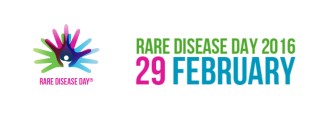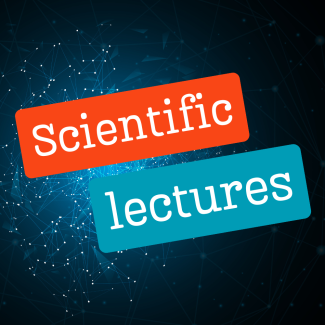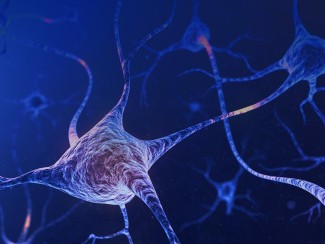Several teams of the Institut du Cerveau - ICM are acting together to fight rare and orphan neurodegenerative diseases such as Amyotrophic Lateral Sclerosis (ALS), Huntington's disease, hereditary spastic paraplegias (HSP), ataxias, dystonia, Tourette's syndrome, mirror movements disease, channelopathies and child alternating hemiplegia...
Understand the causes and mechanisms of these diseases and offer new treatments are the everyday struggles of the Institut du Cerveau - ICM clinicians and researchers. During rare diseases international day on February 29th, 2016, get acquainted with the research work carried out at the Institut du Cerveau - ICM.
WHAT IS A RARE DISEASE ?
A rare disease is defined as rare when it affects less than 1 person in 2000. 3 million people concerned in France and 30 million on a European level. 50% of rare diseases affect children.
Over 6000 rare diseases are characterised by a great diversity of disorders and symptoms that vary not only from one disease to another but also between patients with the same disease.
RARE DISEASES REFERENCE CENTERS
The Institut du Cerveau - ICM works closely with the rare diseases reference centers. These centers, handled by highly specialised teams, facilitate patients care and offer healthcare in connection with all concerned health professionals. They are in contact with patients and families associations and play an important role in the development of clinical trials.
AMYOTROPHIC LATERAL SCLEROSIS (ALS) OR CHARCOT'S DISEASE
8000 patients with ALS in France and thus suffering from progressive motor impairments which can lead to paralysis. This paralysis is due to the motor neurons’ death, particular neurons transmitting information from the brain to muscles so that they contract.
SLOW DOWN ALS PROGRESSION
Séverine Boillée's team is particularly interested in the role of inflammatory processes in motor neurons degeneration.
An immune response is observed in the central nervous system in ALS, as in all neurodegenerative diseases. The immune cells present in the brain are called microglial cells. They help the brain to defend itself against attacks such as infections and are responsible for control and cleaning. For example, they destroy foreign bodies and dead cells.
However, these cells can also play a negative role in the course of neurodegenerative diseases, such as ALS, by releasing toxic factors. Séverine Boillée's team has confirmed these cells' involvement in the development of ALS and their influence on the virulence of the disease in experimental models.
The mechanism by which these cells are toxic to neurons has also been highlighted. Microglial cells release glutamate (which is also a neurotransmitter for communication between neurons) which excess in the brain would be toxic to motor neurons by accelerating their degeneration. Glutamate is not toxic by itself, but its excess is. It is released by microglial cells through a transport system present on their surface, the
" xC - system " which contributes to the microglial cells' toxic activity.
Through specific medication, stopping this system could help slowing down the progression of the disease in ALS patients.
IDENTIFY RISK FACTORS
Séverine Boillée and Edor Kabashi 's teams get involved in the research for new mutations in order to be able to model the disease and elucidate the mechanisms involved in its progression.
In collaboration with an international consortium, Stephanie Millecamps, from Séverine Boillée's team, has participated in the discovery of a new gene, TBK1 (linked to the immune system and autophagy) involved in ALS and fronto-temporal dementias (FTD), a neurological pathology frequently associated with ALS.
In recent years, 29 genes have been implicated in the disease. Especially, the C9orf72 gene, which stands for the most common genetic cause of ALS and fronto-temporal dementias (FTD).
These 2 studies have helped to define clinical criteria allowing to direct patients rapidly to the molecular diagnosis of a mutation in C9orf72.
In collaboration with Edor Kabashi's team, Séverine Boillée and Alexis Brice's teams, have determined the frequency of several genetic causes, including SQSTM1, in patient populations affected by ALS and/or FTD.
According to a study conducted on a cohort of over 1500 patients, these three teams have demonstrated that a long repetition of glutamine (polyQ) at the level of the ATXN2 gene was a risk factor for ALS and ALS-FTD development. Moreover, the concomitance of repetitions at the level of C9orf72 and ATXN2 genes could have an influence on the outcome of the disease (ALS or ALS-FTD, rather than FTD), on the age of onset and on the patients' life expectancy.
UNDERSTAND THE MECHANISMS TO TREAT THE DISEASE
Edor Kabashi's team has developed the first vertebrate animal model with this genetic deficiency, which means the knock-down of the C9orf72 expression in zebrafish. The team researchers have developed a new zebrafish model in which SQSTM1 gene has been inactivated.
In this model, they observe a loss of the fish motor functions associated to a deficit of motor neurons, which imitate ALS symptoms. They also show that the stimulation of autophagy (degradation of abnormal proteins) restores a normal motor behaviour in fish. The involvement of an autophagy deregulation has been mentioned in SLA. These are very encouraging results and could represent a therapeutic perspective in ALS patients.
HUNTINGTON'S DISEASE
This inherited neurodegenerative disorder affects 5,000 people in France. It often appears between 30 and 50 with the onset of motor impairment, behavioural and psychiatric progressive disorders in relation with neuronal degeneration , especially in areas involved in movement control.
Provide energy to the brain in order to treat Huntington's disease is the winning bet of Fanny Mochel and Alexandra Durr in Alexis Brice's team.
A therapeutic study performed in ten patients with Huntington's disease has demonstrated the therapeutic potential of a synthetic oil, triheptanoin. The collected data represent a great hope in Huntington's disease and establish proof of concept for the possible use of this oil as a candidate molecule for future therapies. An operating license was signed to this end with ULTRAGENYX, which markets triheptanoin. On the basis of these results, a therapeutic trial, TRIHEP3, was started in France and the Netherlands, for a period of one year in a hundred patients with clinical and imaging parameters as assessment criteria.
HEREDITARY SPASTIC PARAPLEGIAS
Hereditary spastic paraplegias are a heterogeneous group of diseases on a clinical and genetic level. These neurodegenerative disorders affect people of all ages. Clinical signs gradually settle down and are characterised by crippling walking disorders caused by lower limbs stiffness (spasticity). This clinical picture may be complicated by other clinical signs shared with other neurological diseases such as amyotrophic lateral sclerosis, neuropathy or cerebellar ataxias.
The group led by Giovanni Stevanin, researcher at the INSERM/EPHE, within Alexis Brice's team, has revealed that mutations within the same gene, ALDH18A1, are associated with several types of hereditary spastic paraplegias and to different transmission modes. Moreover, researchers have identified a new blood marker associated with the disease, which would enable its diagnosis. These results contribute to a better understanding of the disease and a more accurate diagnosis.
CEREBELLAR ATAXIAS
Cerebellum neurodegenerative disease , manifested by specific motor symptoms, such as balance disorders, the AUC can be highly debilitating. They are explained in half of all cases by mutations in thirty genes, but many cases still remain unexplained.
The steps forward are the result of international large scale projects in which Alexis Brice's team is involved.
Alexandra Durr, Giovanni Stevanin and their colleagues of the international SPATAX network contributed to the identification of 4 new genes which mutations are responsible for dominant autosomal forms of spinocerebellar ataxias.
The discovery of these genes represents a real hope to identify new potential therapeutic targets and to improve diagnostic tools.
DYSTONIA
Dystonia is a motor disorder manifested by involuntary muscle contractions, leading to abnormal postures and movements, of all or parts of the body. Muscle contraction is disproportionate to the intended movements. It spreads to muscles which should not be requested.
The hypothesis of Mary Vidailhet's research team is that these disproportionate muscle contractions could stem from an abnormal functioning of the cerebellum, an area responsible for movement coordination, which would send incorrect messages to the motor cortex, an area located at the top of the brain which controls the body muscles contraction. Thanks to state of the art techniques, they study the cerebellum's role in order to attempt to modulate its activity by transcranial magnetic stimulation and thus determine the effects on the evolution of the disease.
TOURETTE'S SYNDROME
In Tourette's syndrome, characterized by motor and vocal tics which can be associated with behaviour disorders (obsessive-compulsive disorder, deficits in attention...), the circuits involved are both motor, emotional and limbic, Yulia Worbe and her colleagues from Mary Vidailhet's team have shown not only an alteration of these circuits' connectivity but also a structural anomaly at the level of the folds in these circuits from neuroimaging studies. Marie VIDAILHET's team is now studying the ability to modulate the progression of the disease, especially through behavioural therapies. They also wish to develop research projects focusing on the ability to modify brain activity in order to improve symptoms.
MIRROR MOVEMENTS SYNDROME
Mirror movements syndrome is a rare and hereditary genetic disease. Affected people can not dissociate the movements made by their hands : when one hand performs a movement, the other hand is "forced" to reproduce it against the subject's will. With this disease, it is therefore strictly impossible to play the piano for example. People with this disease show symptoms in early childhood which remain unchanged throughout their life.
The motor system works in human beings according to a crossing organization, the left brain controls the right hand side motor skills and vice-versa. This crossing organization as well as a good communication between the two sides of the brain during the movement are necessary for a good separation of hand movements.
In affected patients, the wiring of the brain is abnormal, one side of the brain is connected to both hands, and thus sends them the same information. Therefore, they make the same movement together at the same time. This is what Emmanuel Flamand-Roze, from Mary Vidailhet's team, and his colleagues have showed, thanks to an approach combining state of the art magnetic resonance imaging techniques and sophisticated neurophysiological investigations.
An abnormal communication between the two hemispheres has also been highlighted by researchers. In the normal course, when the left brain orders the right hand to make a move, it also orders the left hand to do nothing ; in this disease, this inhibition does not occur.
Finally, by studying two large families affected by the disease, researchers have identified a responsible gene, RAD51, which plays a key role in motor system development. It is involved in neuron guidance during development. Different mutations within RAD51 and DCC genes have been identified.
These discoveries open up to a totally new field of investigations for the understanding of the motor system functioning.
NEUROMUSCULAR EXCITABILITY DISEASES
Congenital myasthenic syndromes are a group of genetic disorders disrupting the neuromuscular junction functioning, the communication area between the motor nerve, controlling movement and the muscle which is acting. They are manifested by muscle weakness affecting, according to forms, the torso, limbs, or face, including eye disorders. The most severe forms lead to motor or respiratory deficiency requiring mechanical ventilation.
Sophie Nicole and Bertrand Fontaine's team has revealed that mutations of the agrin gene were responsible for a kind of myasthenic congenital syndrome characterised by distal muscles' weakness and atrophy. Agrin plays an important role in the formation and conservation of the neuromuscular junction. This discovery has major implications in the management of the disease, already allowing to achieve a molecular diagnosis and to consider new therapeutic approaches. This publication also paves the way to more fundamental research on agrin action mechanisms in pre- and post-synaptic compartments (before and after the synapse).
Muscular channelopathies constitute another heterogeneous group of genetic diseases which have in common to be related to gene mutations encoding for ion channels. Ion channels altered in muscular channelopathies are called " voltage dependent channels ", which means, channels sensitive to variations of the membrane's potential. These channels play a key role in muscular contraction and relaxation. Musclular channelopathies manifest themselves through muscle stiffness fits (non-dystrophic myotonia) or paralysis.
The diagnosis, complicated by the periodicity of symptoms, is important for the prevention of the disease, some factors may aggravate seizures. Researchers are working on the identification of the genes involved and the understanding of the mechanisms at stake.
ALTERNATING HEMIPLEGIA OF CHILDHOOD
Sophie Nicole and Bertrand Fontaine's team is interested in another rare disease, alternating hemiplegia of childhood. This neuro-developmental disease is characterised by a periodic hemiplegia and paroxysmal disorders, a persistent developmental delay and a cognitive deficit. It appears before 18 months of age. The early major signs are repeated episodes of hemiplegia from a few minutes to several days, affecting sometimes one side sometimes the other. An international collaboration between researchers, clinicians and patient associations has allowed identification of mutations in a gene, ATP1A3, as responsible for this disease.
This gene is mutated in 75% of cases of alternating hemiplegia of childhood. The corresponding protein plays an essential role in neuronal excitability regulation and is also responsible for the early start of dystonia-parkinsonism. In collaboration with Mary Vidailhet and Stéphane Léhéricy's team, Sophie Nicole and Bertrand Fontaine's team has shown that a mutation of this gene is not the sole determinant of clinical signs of the disease and may lead, within the same family and depending on the individual, to dystonia-parkinsonism or alternating hemiplegia of childhood.
This implies that, in addition to genetic factors, epigenetic and environmental factors play a crucial role in the expression of clinical symptoms. All these discoveries allowed, on the one hand, to establish a genetic tool to diagnose alternating hemiplegia of childhood, and, on the other hand, to consider new therapeutic leads. Institut du Cerveau - ICM researchers have also demonstrated that a special diet may " reduce the frequency and severity of paroxysmal attacks associated with the disease.
These results are very encouraging and pave the way for other energetic therapeutic approaches being currently conducted by Emmanuel Flamand-Roze in Mary Vidailhet's team and Fanny Mochel in Alexis Brice's team.




